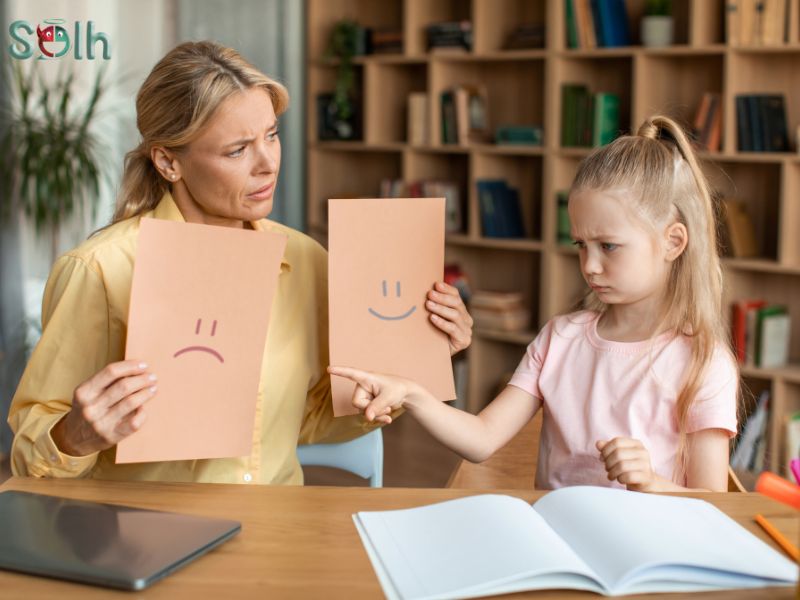It’s 7:45 p.m. You’re trying to get your child ready for bed when, out of nowhere, they burst into tears. You ask what’s wrong, and they shout, “I’m too angry to talk!” You’re caught off guard. Weren’t things fine just five minutes ago?
Sound familiar?
We have all been there - a small trigger sends a child into a full display of emotions, and we have no idea how we got here. The truth is, children feel powerful emotional states similarly to adults yet lack the emotional skills needed for understanding and managing their feelings.
Emotional literacy — knowing how to recognize, name, and express feelings — is perhaps the most vital skill we can impart to our children. It is just as important as teaching them reading or math because emotions influence the way children interact with others, solve problems, and deal with the world around them.
So what are "big emotions" anyway? They are strong feelings that might be too much for a child's system — such as anger, fear, sadness, frustration, and anxiety. Big emotions show up in situations like when a toy is broken, a friend excludes them, or they notice their sibling getting more attention.
If we can teach our kids to recognize and discuss these feelings, we're not only preventing meltdowns — we're equipping them with lifetime skills for mental wellness, relationships, and resilience.
Let's dive into how to do that.
What Are Big Emotions?
Big emotions are intense emotional responses that often exceed a child’s current capacity to self-regulate. They’re not “bad” emotions — they’re simply strong and unfamiliar.
We can think of emotions in two broad categories:
Primary emotions are basic and instinctual — like happiness, sadness, anger, fear, and surprise. These are hardwired into us and appear early in life.
Complex emotions develop later as cognitive and social awareness grows — like guilt, shame, embarrassment, or jealousy. These require a deeper understanding of self and others.
Developmental Milestones
Emotional expression evolves as children grow:
- Infants cry to express discomfort or fear.
- Toddlers experience raw emotions but have little control over them (hence, the tantrums).
- Preschoolers start to recognize feelings in themselves and others, often imitating what they have observed.
- School children can both understand emotions through naming them and learn specific techniques for emotional regulation.
- Teenagers experience a rollercoaster of emotions and hormones, and complexity increases in their internal world.
According to the Child Mind Institute, emotional regulation begins developing in early childhood but continues into young adulthood. This is why patience, repetition, and support are key.
Why Kids Struggle to Express Feelings
There are three main reasons children have difficulty expressing big emotions:
1. Brain Development
The prefrontal cortex, or the brains command center for logic and self-control, doesn't reach full maturity until the mid-20's. When children become overwhelmed their emotional brain known as the limbic system takes over. Therefore, they literally can’t think their way out of a meltdown.
2. Language Limitations
Young children experience deep emotional states although they do not possess adequate words to explain what happens inside them. Rather than saying, "I'm frustrated that I'm not able to do this puzzle," a 4-year-old may simply toss it onto the floor.
3. Environmental Influence
Parenting styles, exposure to screens, stress at home, or witnessing conflict can all affect emotional development. If a child sees anger met with yelling or sadness ignored, they may learn to suppress or escalate their own responses.
The Harvard Center on the Developing Child emphasizes that a child’s emotional toolkit is shaped by consistent, responsive relationships with caregivers. That’s where you come in.
How to Start the Conversation
Discussing feelings with children doesn't have to be tricky or uncomfortable — but get the timing right.
Tips to Create a Safe Emotional Space:
- Don’t dive in mid-meltdown. Wait until your child is calm.
- Be present. Put away phones, kneel to their level, and make eye contact.
- Use "I" statements to get things started: "I saw you seemed upset just now."
- Ask open-ended questions that allow the teller to give detailed responses rather than requiring yes/no responses.
Try These Starters:
- “I noticed you were quiet after school. Want to talk about it?”
- "It's okay to feel angry - can you tell me a little more about it?"
- The way you looked during the competition indicated frustration to me. What happened?”
The objective isn't to "cure" the feeling — it's to recognize it, investigate it, and make it okay to talk about.
Emotion Coaching Techniques
Emotion coaching serves as a method that teaches children how to identify and control their emotions properly.
Here’s how to do it:
1. Name the Emotion
Help your child identify what they’re feeling. Use simple words:
“You look sad. Is that how you’re feeling?”
2. Validate and Normalize
Let them know their feelings are okay:
“It’s normal to feel jealous sometimes. Everyone does.”
3. Guide Expression
Encourage safe ways to express feelings:
- Drawing or coloring emotions
- Talking through puppets or toys
- Journaling or storytelling
4. Introduce Coping Tools
- Breathing exercises (e.g., “Smell the flower, blow the candle”)
- Calm corners with sensory toys or books
- Emotion wheels to help name and recognize different feelings
These tools can give kids power over what feels overwhelming.
Age-by-Age Guide
Here’s how to adapt your approach based on your child’s age:
Toddlers
- Use emotion flashcards with facial expressions.
- Model emotion naming: “You’re mad because the toy broke.”
- Keep responses short and simple.
Preschoolers
- Use storybooks about feelings (e.g., The Color Monster, Grumpy Monkey).
- Role-play scenarios with dolls or animals.
- Practice “feeling faces” in the mirror.
School-Aged Children
- Introduce mood charts or feeling journals.
- Talk about triggers and brainstorm coping tools.
- Praise efforts to express rather than suppress emotions.
Tweens & Teens
- Respect their need for privacy, but remain emotionally available.
- Talk openly about peer pressure, identity, and stress.
- Use real-world situations (TV shows, news) to discuss complex emotions.
What NOT to Say
In moments of stress, it’s easy to fall back on quick-fix statements. But some common phrases can unintentionally shut down communication.
Avoid Saying:
“Don’t cry.”
“You’re overreacting.”
“It’s not a big deal.”
“You’re fine.”
These responses can feel invalidating and teach kids to distrust or bury their emotions.
Instead, Try:
“I see you’re upset. I’m here.”
“It’s okay to cry — that helps us feel better sometimes.”
“Tell me what feels big to you right now.”
Validation is the first step to regulation.
Your Role as a Parent or Caregiver
You don’t need to be perfect. You just need to be present.
What You Can Do:
Model emotional intelligence: Show how you handle frustration or sadness in healthy ways.
Be consistent: Kids learn through repetition and predictability.
Understand your own triggers: Step away when you need to.
Normalize seeking support: Therapy, mindfulness apps, or support groups are healthy and helpful.
When children see you owning and expressing your feelings, they feel safer doing the same.
Real-Life Example
When my friend Priya’s 7-year-old son, Aarav, started acting out at school, teachers assumed he was being “difficult.” But Priya noticed the outbursts happened right after his dad started traveling more for work.
One evening, she sat with him and gently said, “It seems like something’s been bothering you lately. Want to talk?” After a long silence, he whispered, “I miss Papa.”
That moment of connection opened the door. Together, they created a routine — video calls, drawings, and a bedtime “wish box” for Papa. The school behavior improved almost overnight.
The turning point wasn’t a punishment or reward — it was being heard.
Conclusion
Emotions are part of being human, and the earlier we teach children how to handle them, the better prepared they’ll be for life.
So the next time your child yells, “I’m too angry to talk!” — take a breath. That’s your cue. Not to fix or control — but to connect.
Because talking about emotions isn’t a one-time chat. It’s a lifelong conversation — one bedtime, car ride, and sandwich-cutting disaster at a time.
And the return on investment? Resilient, empathetic, emotionally strong humans who know they can trust themselves — and you.
How Solh Wellness Can Help:
At Solh Wellness, we offer holistic, nurturing support to individuals struggling with emotional distress. Through our technology-based platform, we provide anonymous counseling, support groups, and mental health information to those experiencing distress, specifically those dealing with abusive family patterns or relational difficulties. We offer evidence-based interventions that help individuals navigate emotional crises while fostering resilience and hope. By creating awareness about mental health and making help-seeking behavior the norm, Solh Wellness seeks to break the cycle of isolation and provide the support needed to prevent further tragedy.



